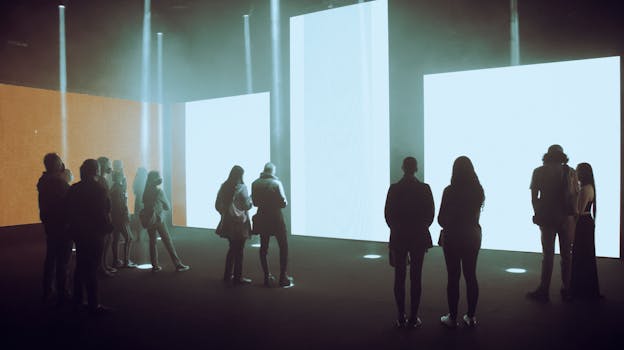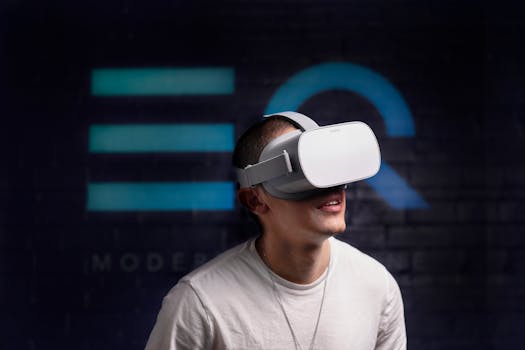Anúncios
Few experiences feel as exciting as jumping head-first into something that responds to you. Interactive entertainment channels this feeling, letting each participant shape digital stories or challenges in real time.
Opportunities for involvement have skyrocketed, drawing audiences in with gaming, apps, and live digital events. Participation isn’t just a feature—it’s quickly becoming what people expect from entertainment across platforms and genres.
As more people crave real influence over their favorite online activities, understanding why participation matters is crucial. Explore how it fuels creativity, engagement, and connection in modern interactive entertainment today.
Direct Choices Place Users in the Driver’s Seat of Digital Fun
Inviting hands-on input immediately pulls users into the excitement of interactive entertainment. The apps and games people love most allow them to make meaningful choices at every step.
Building participation into entertainment requires giving clear, satisfying feedback. When a mobile game tells players, “You earned a new skill for your creative solution,” that acknowledgment keeps the momentum strong.
Scenario: Personalized Decisions Foster Emotional Investment
Consider a streaming series that pauses and asks, “Should the hero confront the villain now or wait for backup?” Selecting an answer leads to distinct outcomes, making every viewing unique.
Viewers sit forward and lean in, anticipating how their input shifts the digital entertainment landscape. This small but powerful sense of control sparks emotional connections and return engagement.
Throughout interactive entertainment, when choices matter, audiences perceive themselves as co-creators—compelled to revisit, experiment, and talk about their adventures with friends.
Mini-Checklist: Three Ways Participation Boosts Fun
1. Let users change a story outcome. Example: “Choose who to trust in the mystery,” giving a sense of risk and reward.
2. Provide meaningful challenges. Rule: Complete a puzzle; instantly see a new path appear.
3. Give personalized rewards. Action: “Your design unlocked a rare look,” encouraging creative risk-taking again and again.
These steps create entertaining moments people remember long after the experience ends.
| Participation Element | Popular Example | User Action | Takeaway: Try This |
|---|---|---|---|
| Story Branching | Interactive novels | Pick character responses | Select different choices each playthrough for new endings |
| Real-Time Feedback | Quiz apps | Submit answers under time pressure | Challenge friends in a trivia race—compare performance live |
| Custom Content Creation | Art or music apps | Compose or illustrate directly | Share your creations with a creative community |
| Live Audience Polls | Virtual concerts | Vote on next song or encore | Participate in shaping the event’s direction real time |
| Collaboration Tools | Co-op games | Team up and coordinate strategies | Use in-game chat or cues—celebrate group victories |
Building Social Bonds Through Co-Play and Shared Outcomes
When people play together, interactive entertainment transforms. Collaboration and friendly competition naturally create memorable moments and lasting relationships, both in-person and online.
To make group participation work, designers use chat features, shared missions, and reward structures that encourage teammates to strategize, celebrate, and even tease each other.
Real-Time Communication Keeps Energy High
Realistic chat and gesture systems keep friends laughing and energy buzzing. When one player types, “Let’s try the left tunnel again,” others coordinate instantly, fostering team spirit and quick feedback.
An app might display kudos when a new player says, “Thanks for the help!” to a veteran, making social connections easier for everyone, even behind a screen.
- Team up in group challenges to solve puzzles faster. Harness individual strengths, pool ideas, and unlock exclusive content together—everyone wins as a result.
- Trade items or tips with friends. Sharing accelerates progress and deepens friendships, creating in-game support networks participants rely on.
- Participate in live event leaderboards to boost group pride. Friendly rivalry adds excitement and plants seeds for new social circles.
- Create alliances for battles or creative projects. Build trust through repeat collaborations—small in-game achievements spark wider bonds outside the app.
- Join chat rooms focused on interests. Plan strategy, share fan theories, and organize next steps—fostering positive, ongoing interaction every time you play.
As these concrete examples show, collaborative design turns interactive entertainment into a social anchor, especially for people craving meaningful connection.
Scenario: Shared Victories Turn Strangers into Friends
Imagine two users high-fiving over video after winning a dance app challenge. “We nailed that tricky combo!” their chat bubbles boast. That burst of shared pride drives repeated group play.
In most interactive entertainment, strangers morph quickly into teammates, mentors, or even rivals. Playful banter or a quick private tip cements camaraderie well beyond the first session.
- Invite new players to join your squad. Watching pros at work accelerates learning and boosts confidence for everyone involved.
- Send an encouraging emoji when teammates struggle. A simple “thumbs up” lightens the mood and helps groups rally together.
- Offer to trade a rare item after a big group win. Tangible generosity forges loyalty, turning fleeting encounters into memorable partnerships.
- Use in-app voice chat for faster coordination. Speaking directly can solve misunderstandings instantly, raising group performance and satisfaction.
- Join fandom events to share stories after a victory. The personal touch—“We did it!”—brings depth to digital friendships over time.
These meaningful gestures and activities prove interactive entertainment isn’t just screen time—it’s a laboratory for social skills and lasting bonds.
Immediate Feedback Keeps Engagement Alive and Personal
Real-time reactions make interactive entertainment addictive and highly personal. When users see, hear, or feel direct responses to their actions, it creates a satisfying sense of accomplishment that invites replay.
This ongoing feedback loop motivates participants to keep improving, learning, and returning. Digital entertainment feels alive only when people sense their creativity or choices are truly recognized and rewarded.
Designing Satisfying Rewards That Match User Goals
Imagine racing a friend in an app. As the finish line approaches, the game cheers “New record!” or flashes a gold trophy animation. This vibrant, immediate response deepens excitement and pride in personal growth.
Some digital entertainment titles use subtle cues: a glowing border, soft chimes, or congratulatory text like “Fantastic combo!” These details, layered with escalating rewards, make each micro-achievement feel like a triumph.
Participants quickly learn which actions trigger the best feedback. Mastering timing, teamwork, or navigation becomes a rewarding loop—driving deeper mastery with every round.
Sequencing Challenges and Progress Unfolds Over Time
Successful interactive entertainment projects ramp up complexity thoughtfully. One puzzle unlocks another, each requiring different skills or creative thinking, so players always have something new to anticipate.
Between each challenge, the app communicates next steps: “Great deduction! Now try this tougher level.” Short, encouraging instructions keep motivation high. Players see a clear path forward—and know what’s next if they improve.
Small wins roll into bigger victories, while setbacks trigger tips or second chances. “Try again—use a different approach!” Coaches users without ever making them feel stuck.
Physical Embodiment: Taking Interactive Entertainment Beyond the Screen
Modern entertainment engages not just the mind, but the whole body. From gesture-controlled consoles to music games that require standing and moving, participation has become truly immersive.
Physical interaction makes digital entertainment more memorable. Moving, laughing, and even sweating rewires what it means to enjoy a story or challenge by turning screens into springboards for action.
Real-World Examples of Embodied Play
Dance games prompt users to follow choreographed routines. “Step left, spin, strike a victory pose.” Players feel not just invested, but invigorated—tying joy to authentic movement and self-expression.
Augmented reality apps send participants walking, searching, or even jumping around the living room. Look for virtual clues, tag friends, or create real-world scavenger hunts—all while staying mobile and engaged.
Fitness-focused entertainment apps track heart rates, encourage friendly challenges, and reward creative effort. “Race to 10,000 steps” transforms a solo jog into a live global competition, connecting health and digital fun.
Turning Analogies into Action
Like dancing from note to note, interactive entertainment leads people through a choreography of choices and challenges. Following the music, you can invent fresh moves—then invite friends to copy or remix them.
An app might prompt: “Strike your most creative superhero pose!” This playful request encourages both spontaneous fun and expressive collaboration, making each round uniquely memorable.
The analogy extends to teamwork, too: Think of your squad tackling an escape room puzzle, everyone providing a piece of the solution. That shared physical engagement unites and exhilarates everyone involved.
Participation Redefines What It Means to Be Entertained—And to Belong
New digital landscapes reward those who dive in wholeheartedly. Participation has made interactive entertainment a mirror: users see themselves in every story, challenge, and victory.
From solo creative apps to global online events, active involvement amplifies connection, creativity, and joy. The unique blend of feedback, collaboration, and real action places users—not creators—at the center.
Try engaging more intentionally with your favorite interactive entertainment platform this week. Notice which features drive you to play longer, laugh, or reach out to others. Each moment of participation shapes a richer, more connected experience for everyone.



